
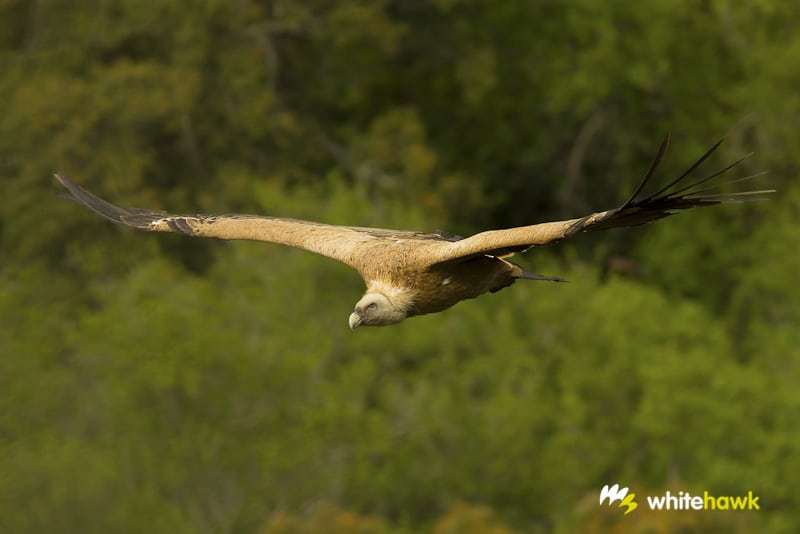
Spain is home to four species of vultures including the Egyptian Vulture, Eurasian Griffon, Cinereous Vulture and Lammergeier. It is a fantastic place to observe these majestic birds. Of all of them, the Eurasian Griffon is the most abundant species. In fact, its numbers have increased over the past few years, and Spain is home to the largest portion of this species’ European population. The vultures in Spain are fascinating to watch, and we take every opportunity we can to learn more about these amazing birds.

For such a large bird – with a wingspan of 2.80 meters – it might seem surprising that they take off without any apparent difficulty. They use thermal currents in order to gain lift and height and then soar great distances in search of food. Birds that are solely scavengers often travel hundreds of kilometers looking for dead animals. When they find food, they gorge themselves if they have the chance, until they come upon a new food source.
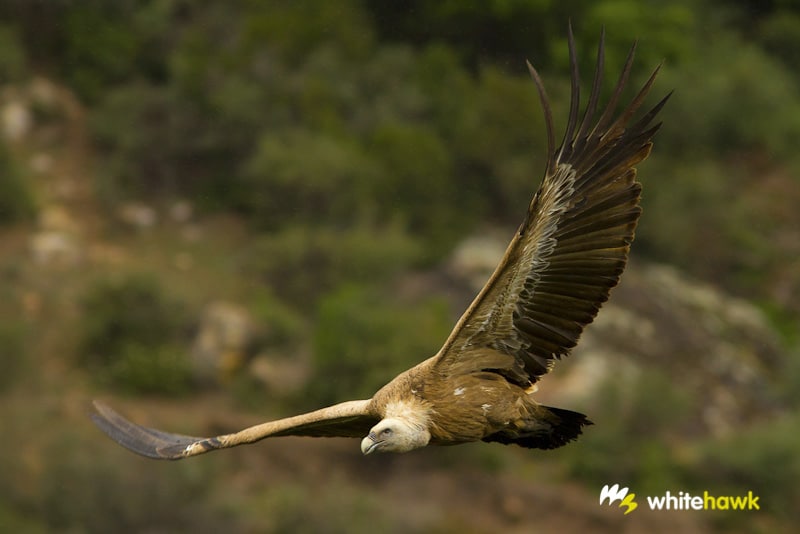
To challenge our bird identification skills and to heighten our birdwatching knowledge, it can be fun to begin to identify age classes for common or familiar species. With some experience we can learn to identify the ages of individuals of Griffon vultures. Though there is some overlap and a lot of individual variation during the process of acquiring adult traits, we can distinguish with a degree of certainty between juveniles, immatures, subadults and adults.
We should look first at the color of the bill, the neck and the eye, which change color over the years. Juveniles have dark brown eyes, while those of the adults are light amber. However, the eye color isn’t always easily seen in the field and light conditions can make the eye seem lighter than it really is. Identifying age groups isn’t always easy!
First year juveniles have black beaks and the ruff around their necks is light brown. These also change with age. If the individual has a ruff that is white like the snow, the beak has turned completely cream-colored, and the primary coverts and secondaries are light brown, you can be sure that this time you are observing an adult. We illustrate some of the different age classes in the following photos.
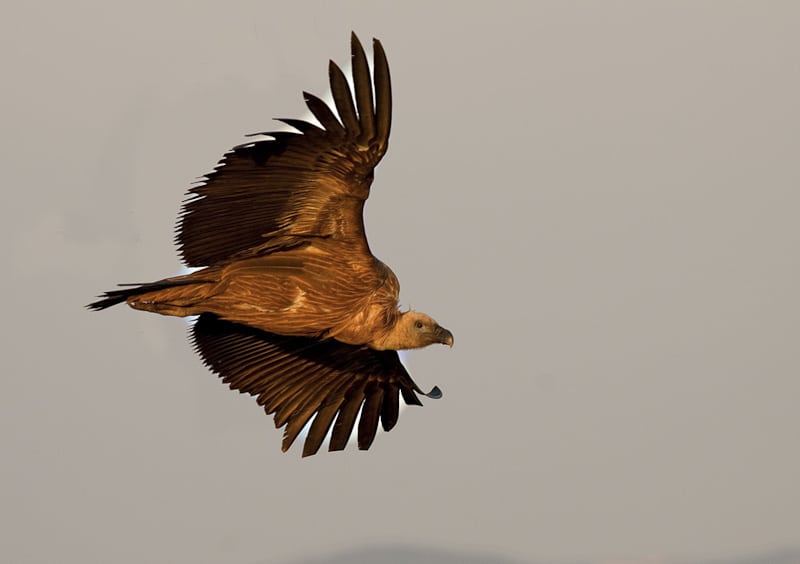
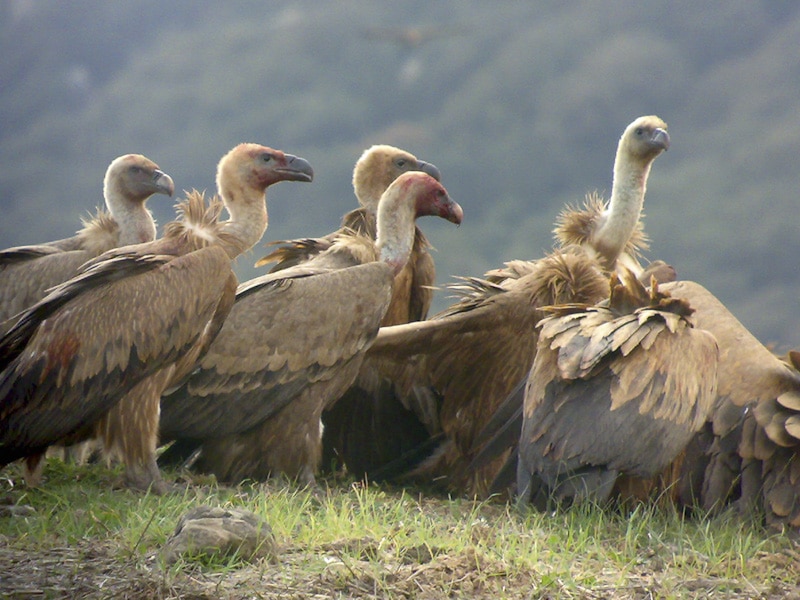
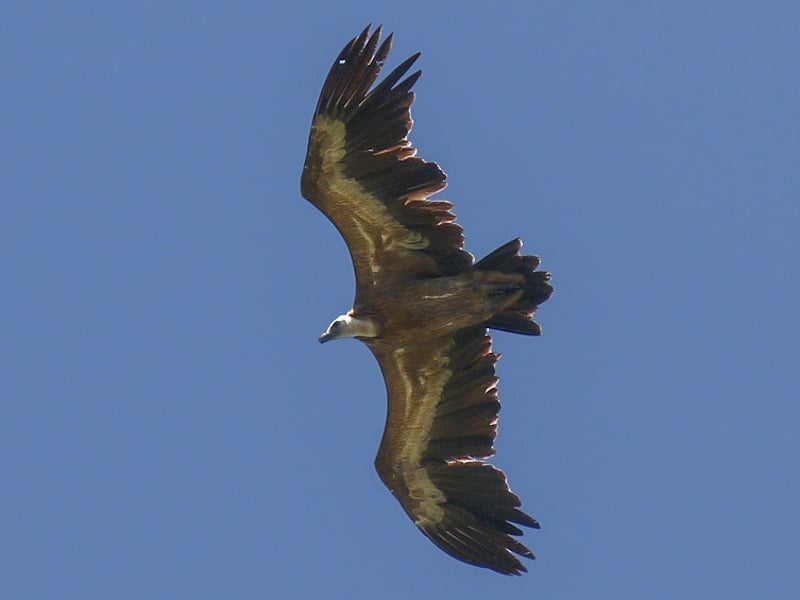
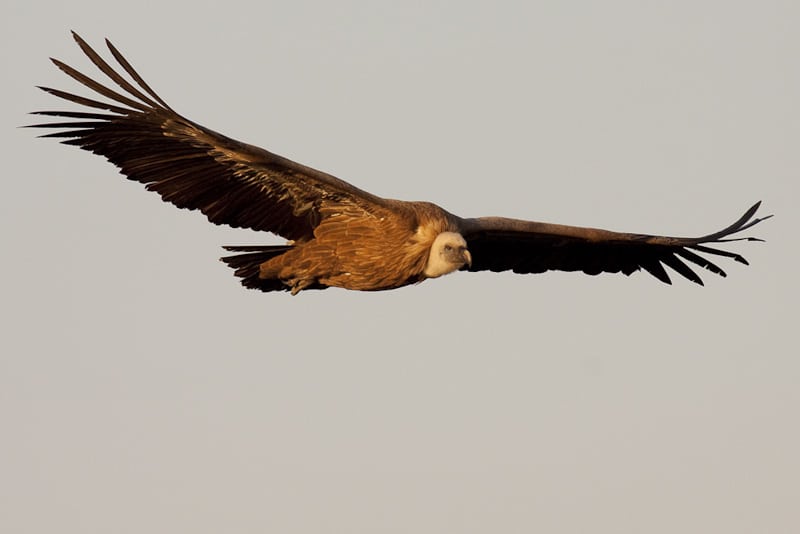
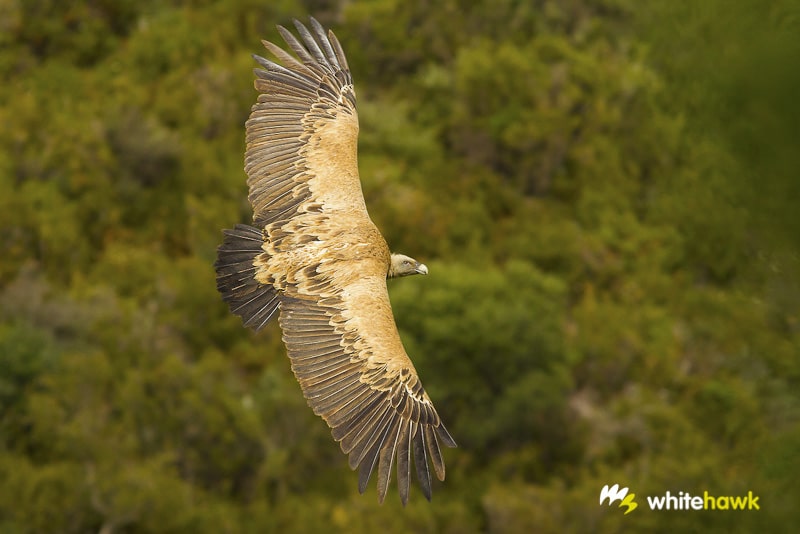
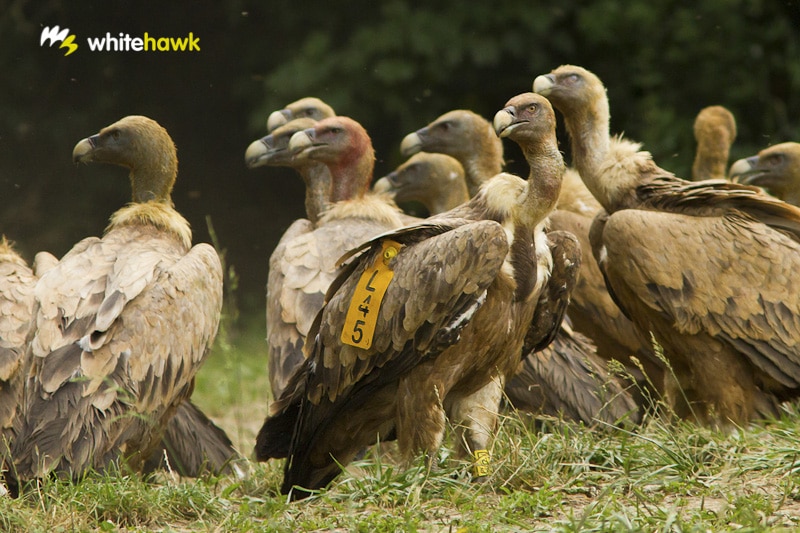
However, to further refine our skills, it is necessary to pay attention to their stages of molt. Vultures usually acquire adult plumage at seven years of age (although some individuals do so earlier). The moment that the bird loses its last juvenile primary we have lost any reference to its birth year. We can only be sure that it is an adult, older than seven years old. We will go into the secrets of recent studies on their molting patterns in future entries. Ageing vultures in Spain is a good challenge, we encourage you to practice ageing birds whenever the opportunity arises! If you are curious to learn more, contact us and we will be happy to help!
Thanks to Javier Elorriaga and Miguel González for their help and pictures!

